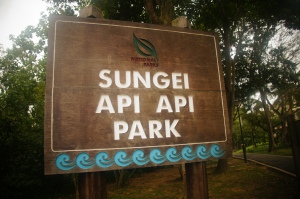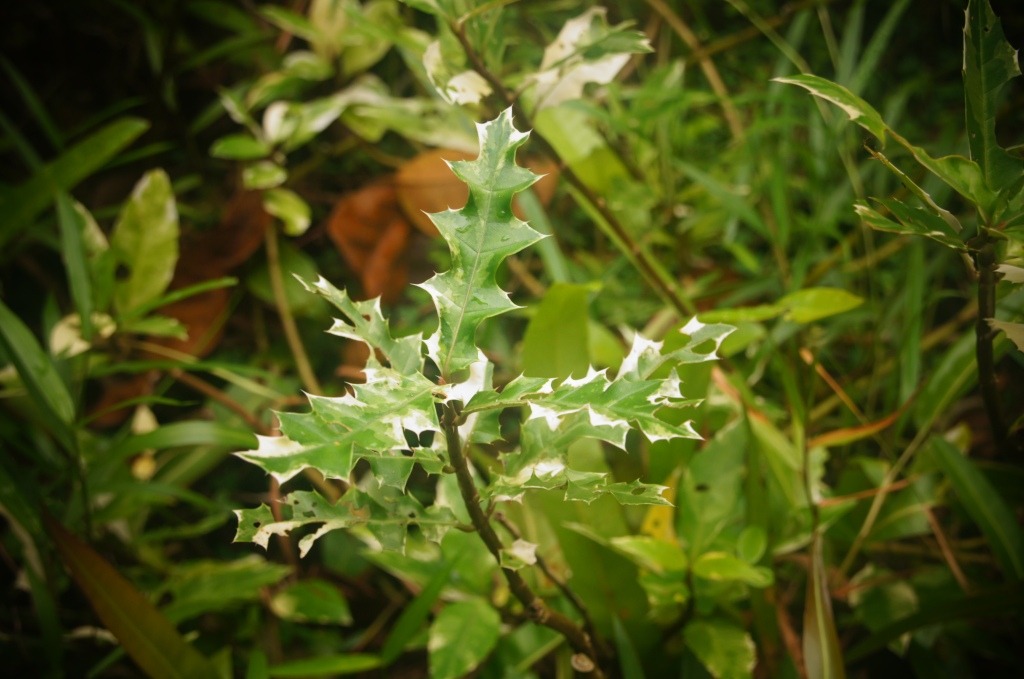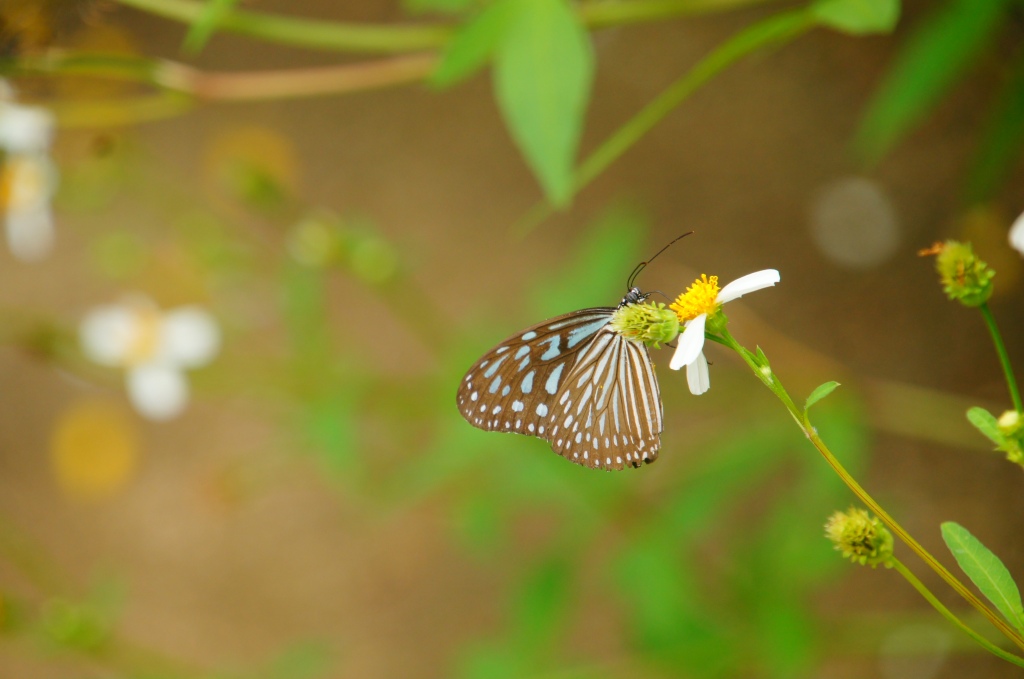I was excited to visit Pasir Ris Park because I hadn’t been there for a long time. I went there this weekend, early in the morning- ready for a good walk and to spot some wildlife.
First we entered Sungei Api Api park, where we were totally lost and had no idea how to get to the mangrove boardwalk. After enquiring a few people, we found out we had to go to take the entrance from Carpark C, near the MRT Station.
At Sungei Api Api, there we saw many glimpses of the mangroves, and huge herons and egrets flew past us.
We saw a small Cotton Stainer Bug (Dysdercus decissatus):
A White-breasted Waterhen that was carrying a leaf, probably for building a nest.
When we crossed the bridge, there was an excellent view of the mangroves, but I was saddened that it was very polluted- with plastics bags, rubbish and cranes that were floating on the water. Hopefully it is cleaned up and the construction machines are removed.
The mangrove boardwalk was quite silent, only with a few joggers and families that occasionally passed us by. We were welcomed by a lot of curious crabs.
Different types of Tree-climbing crabs/Vinegar crabs:
This is an ant-plant, a plant that have close associations with particular species of ants. This was called the Shrubby Baboon’s Head (Hynophytum formicarum). In these plants, the base of the stem is swollen into a fleshy structure which have honeycombed tunnels in which the ants live. The ants probably provide minerals for the plant and in return it provides it’s soft, fleshy fruit and seeds.
These are Sea Hollies, but even though they are named after the English Christmas plant, they are totally unrelated- except for the fact that they have similar looking leaves. They cope with the salty condition by producing a salty sap and releasing the excess salt through the leaves which is removed by rain.
There was also a grasshopper sitting on one of the leaves- I liked the nice contrast of colours.
I always wondered what the huge mud mounds in the mangroves belonged to. I found out the Mud Lobster (Thalassina anomala), one of the master builders in the world- stay in this burrow. While they dig, they also help bring fresh mud to the surface and circulate nutrients through the ecosystem. Many plants, like the Sea Hollies grow on these mounds as they are not tolerant of inundation (flooding).
Fishtail palms (Caryotas) get their ‘fishtail’ name because their leaves are very similar to the tail of a fish. My mother explained to me that they are ‘bipinnate’ which means that the leaf has a normal stem like other pinnate palms, but it has a secondary branching of the stem which have more leaves. There were a few around the mangroves:
Mudskippers always fascinate me- their weird ‘googly’ eyes, huge face sticking out of their water, and their awkward bodies. But what is really fascinating is that they are able to stay out of water for a long time. They breathe through their branchial cavity and like amphibians their wet skin. That’s why they often roll around in mud and puddles to keep their skin moist.
Giant Mudskippers (Periophthalmodon schlosseri), the largest mudskipper in Singapore are quite common at Pasir Ris Park. I was taking pictures of one mudskipper while it was sitting, head out of the water:
Suddenly, a long snake went right under it! It was the Dog-face water snake (Cerberus rynchops), named after the three-headed dog in Greek Mythology that guarded the gate to hell. Just like most aquatic snakes, it can breathe through its skin.
We came out of the boardwalk to a lookout point. On our right, there were many photographers waiting for birds. The view of the mangroves was spectacular, and we also spotted a Grey Heron(Ardea cinerea) and many Whimbrels (Numenius phaeopus)
We chatted with the photographers and they told us they were waiting to take pictures of some kingfishers. An otter had come a few minutes before and we missed it! We waited with them for a while- but sadly we did not spot any.
We saw two spiders in one place- the Batik Golden Web Spider (Nephila antipodiana) and another spider I could not identify.
There was a school of Spotted Archers in the water. They shoot prey with a ‘well-aimed’ squirt of water which is powerful enough to travel a metre through the air to knock out an insect from its perch.
The Mangrove Cicada (Purana tigrina) is the loudest insect and makes a sound that is capable of reaching up to 100 decibels. The male sings to attract a female, and does this through the vibrations of the two membranes in their abdomen.
The beautiful view of the mangroves:
With that, we came to the end of the Mangrove boardwalk. We continued on to a little kitchen garden at the park to spot some butterflies.
Sure enough, there were many butterflies that were attracted to the beautiful flowers.
That was the end of the trip to Pasir Ris Park. I was so happy to have seen so many things, and I am surely going to go back exploring- and hopefully spot an otter and more birds.
LOCATION
Pasir Ris Park stretches from Pasir Ris Road to Jalan Loyang Besar and can be accessed through Elias Road and Pasir Ris Green
The boardwalk can be reached through Carpark C, near the MRT Station
Happy New Year to all! Have a nature-filled year ahead.
———————————————————————————————————————-
Lavanya Prakash
Blog- https://mynatureexperiences.wordpress.com/
Twitter- https://twitter.com/MyNatureExp
Facebook page- Mynatureexperiences
Email- mynatureexperiences(at)hotmail.com

























great post, and awesome photos! 🙂
Thank you so much!
Great write up!
I think the plant you identified as Shrubby Baboon’s Head (Hynophytum formicarum) should be Noni (Morinda Citrifolia). Hynophytum formicarum has red berries as fruits. I’m not 100% sure, but just thought that you should know. 🙂
Thank you so much for reading my blog! As for the identification, I think you’re right, I wasn’t too sure if it was the Baboon’s head. Thanks again! -Lavanya